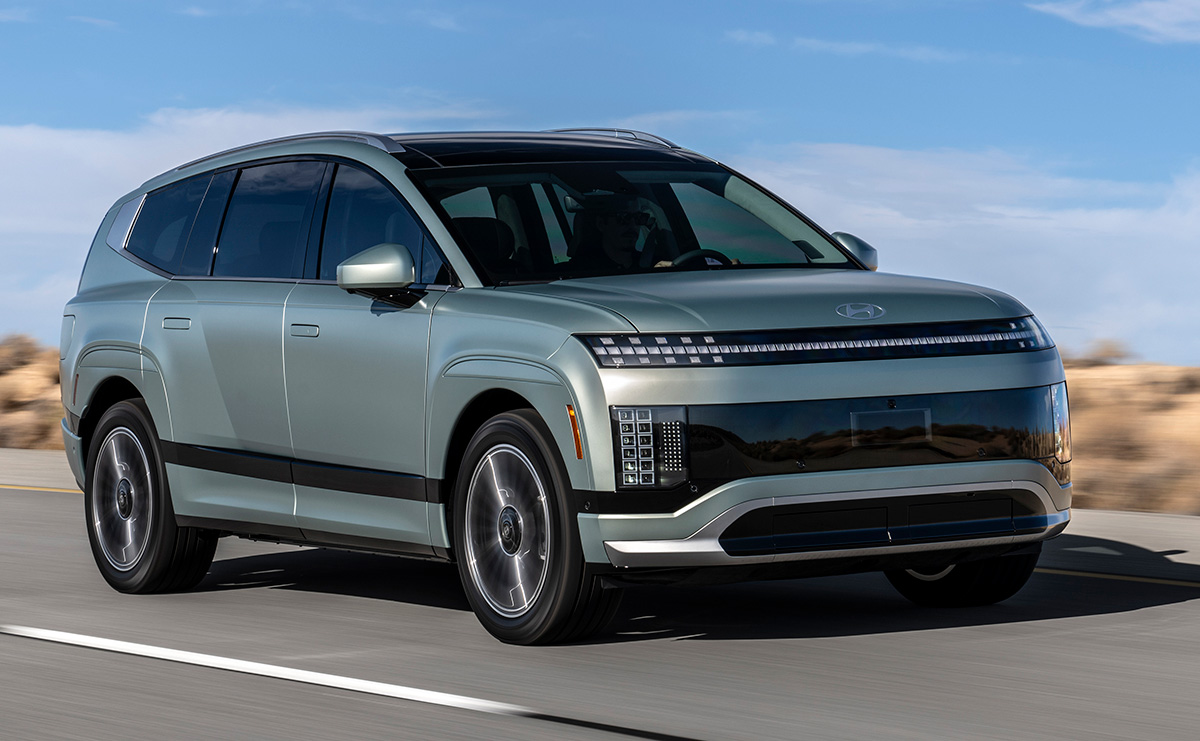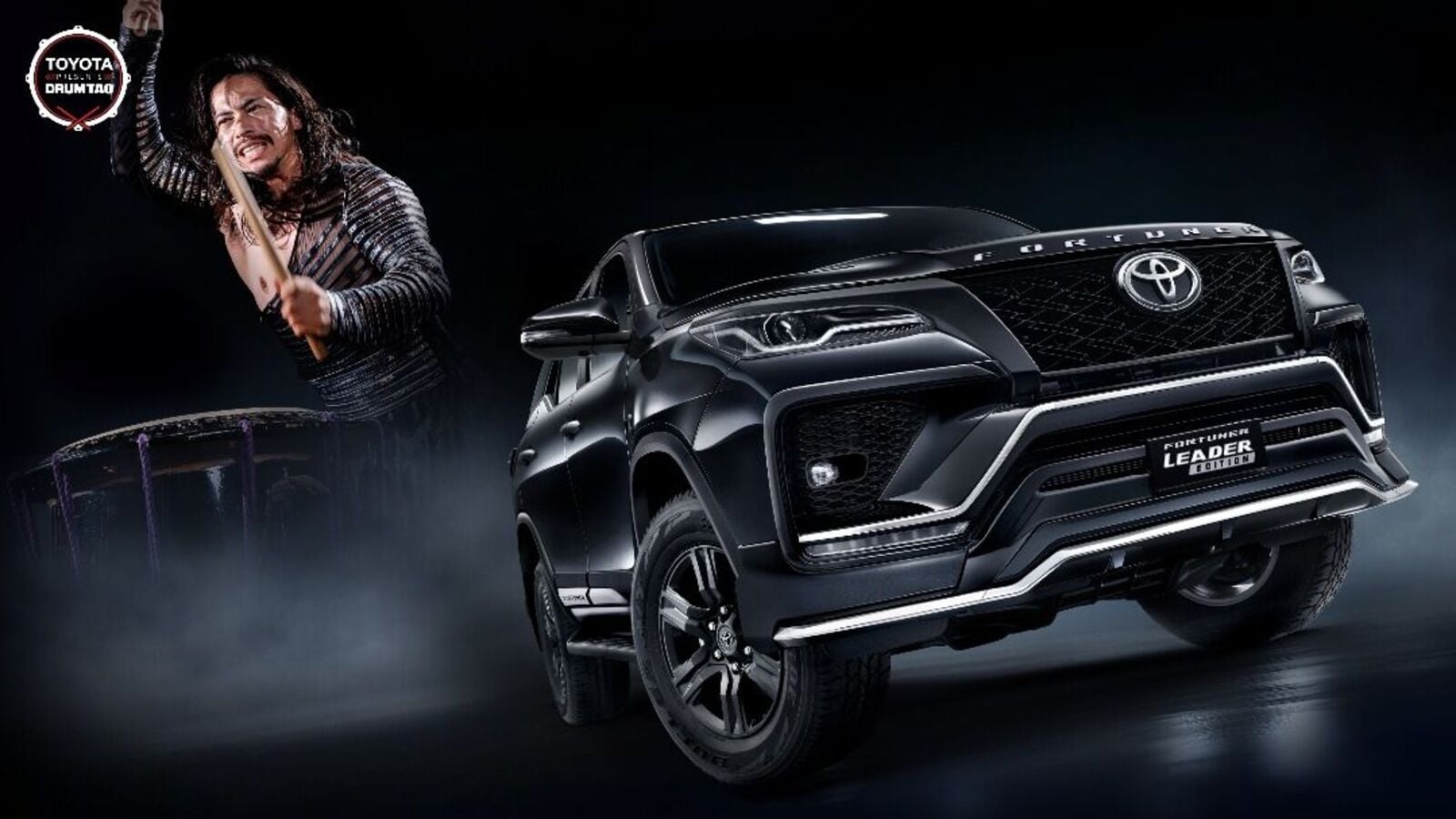With 300 miles of range in every model and US-built, Hyundai’s biggest EV takes it upmarket.
On Wednesday, just before the Los Angeles auto show, the 2026 Hyundai Ioniq 9 battery-electric crossover made its global debut. The premiere was held at the Goldstein Residence, an early 1960s residence with expansive views set into a hillside in LA’s Beverly Crest neighborhood. The house has been a design icon since it opened, and its use underscored the upscale market targeted by the electric three-row SUV from one of the world’s most ambitious carmakers.
With more than 300 miles of range from every version, space for up to seven passengers, and the NACS charging port from Day One, the Ioniq 9 could become Hyundai’s halo EV. It’s a square but design-forward three-row utility vehicle with high-design interiors and the brand’s mix of user-friendly interfaces and advanced tech.
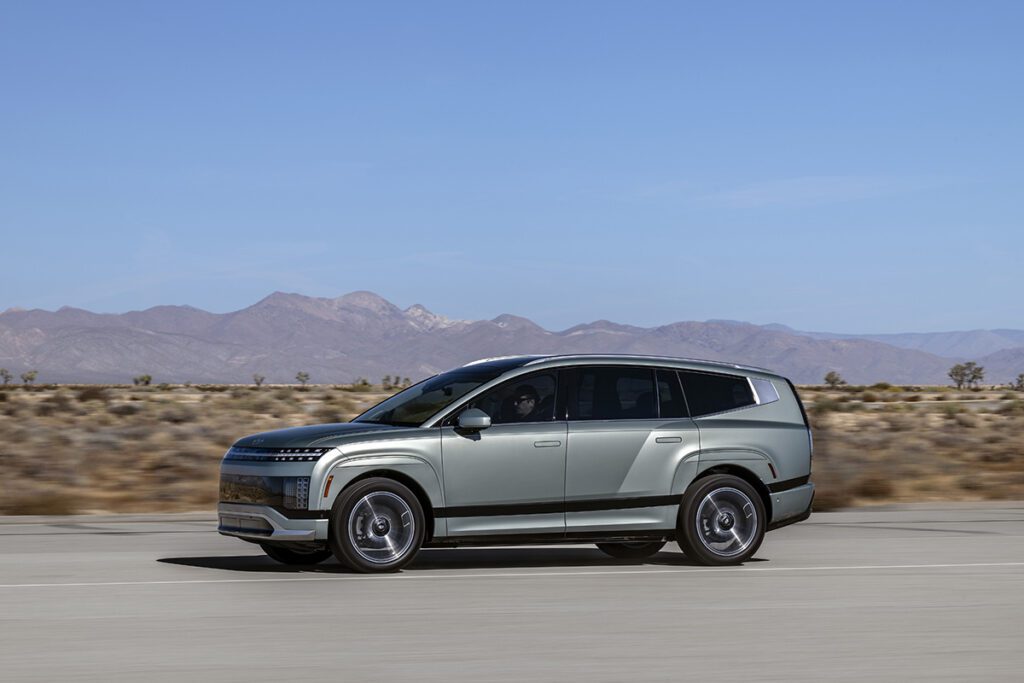
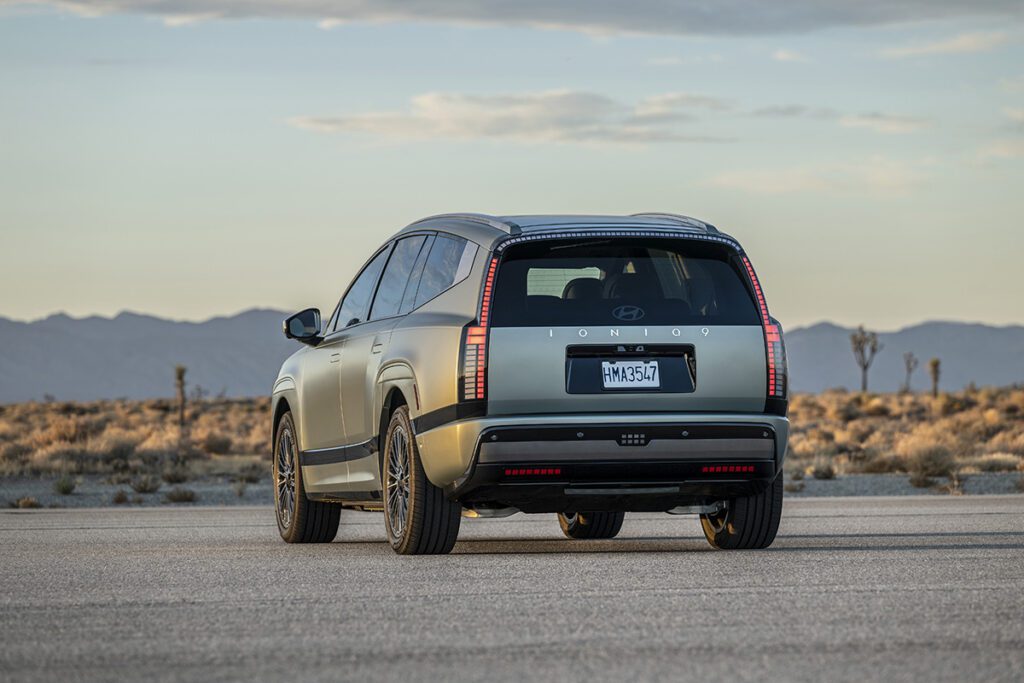
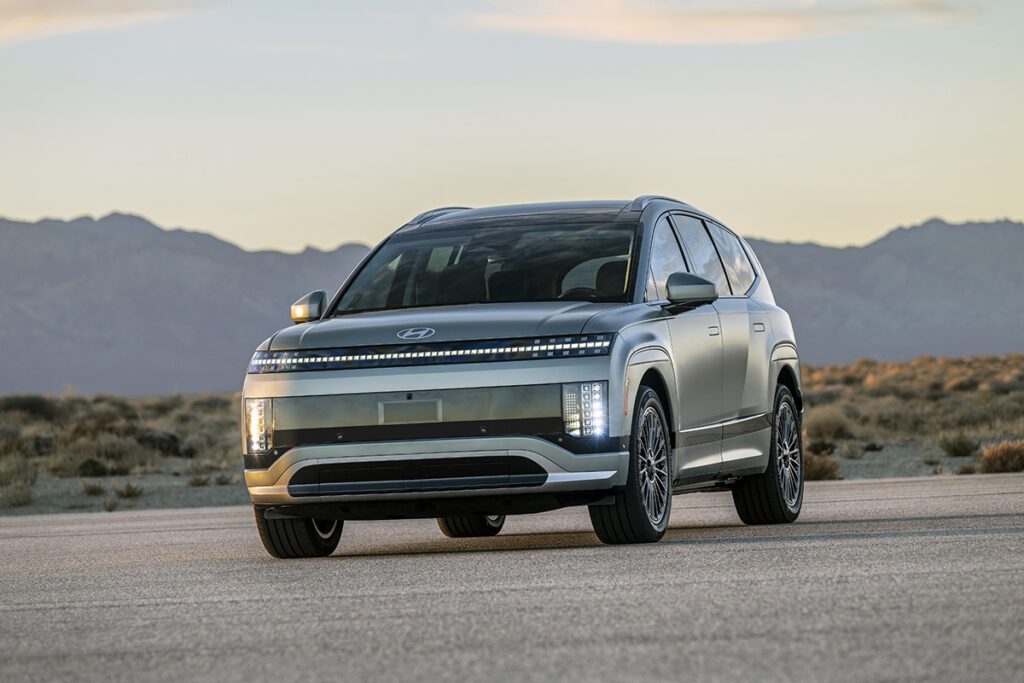
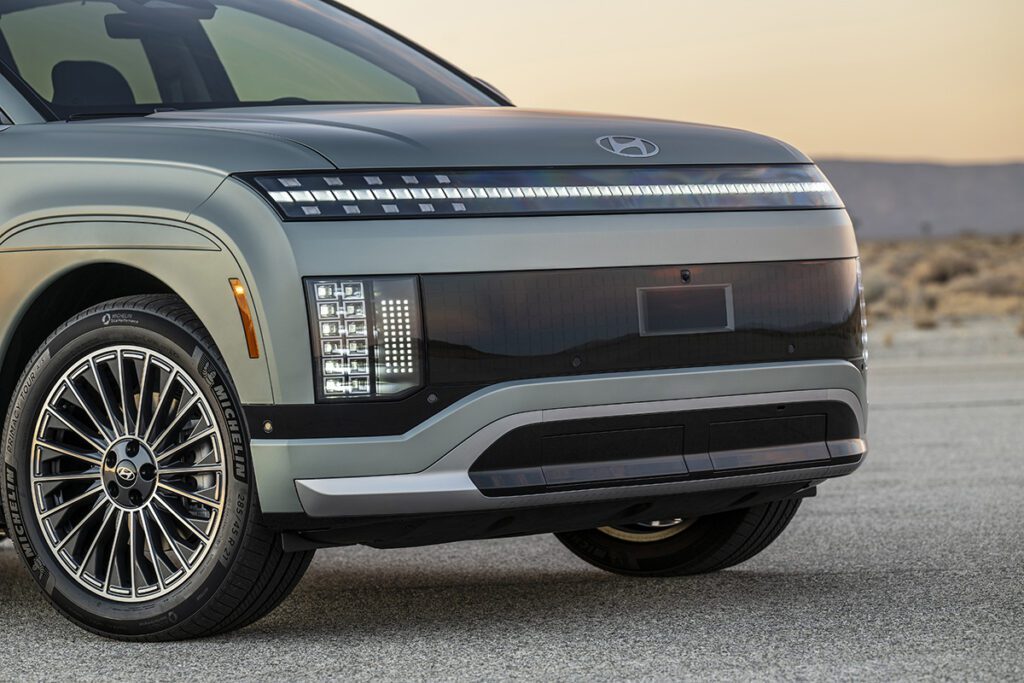
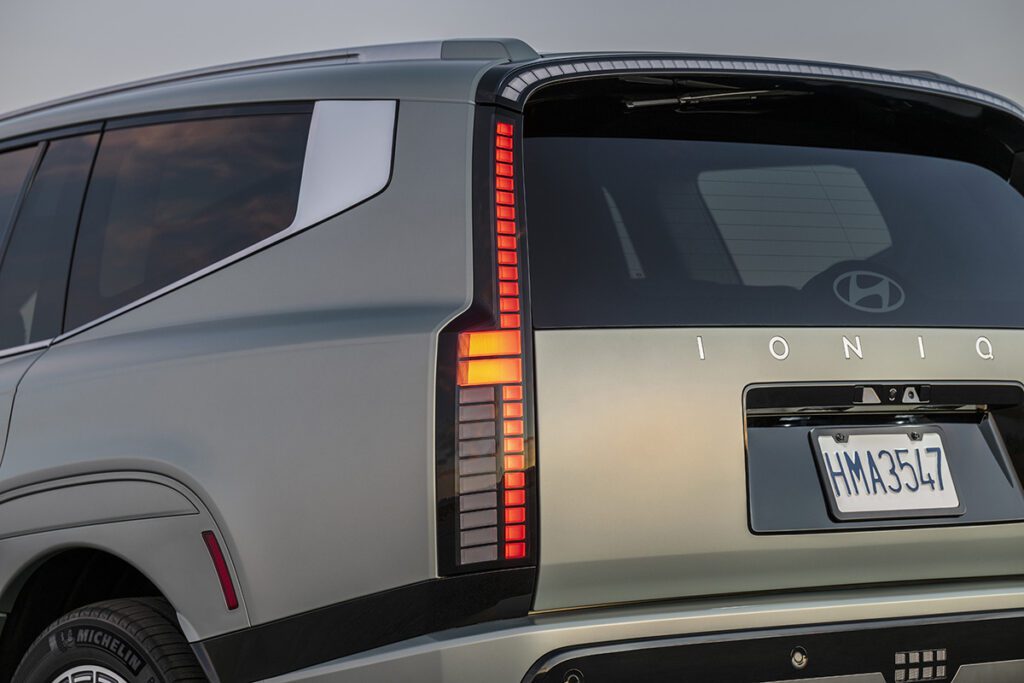
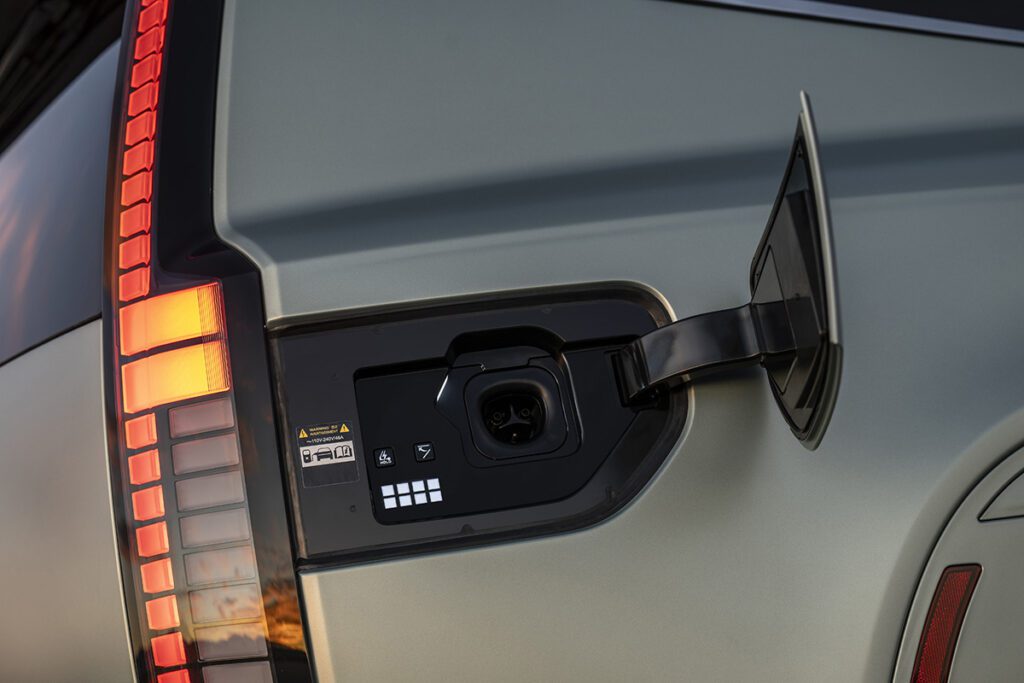
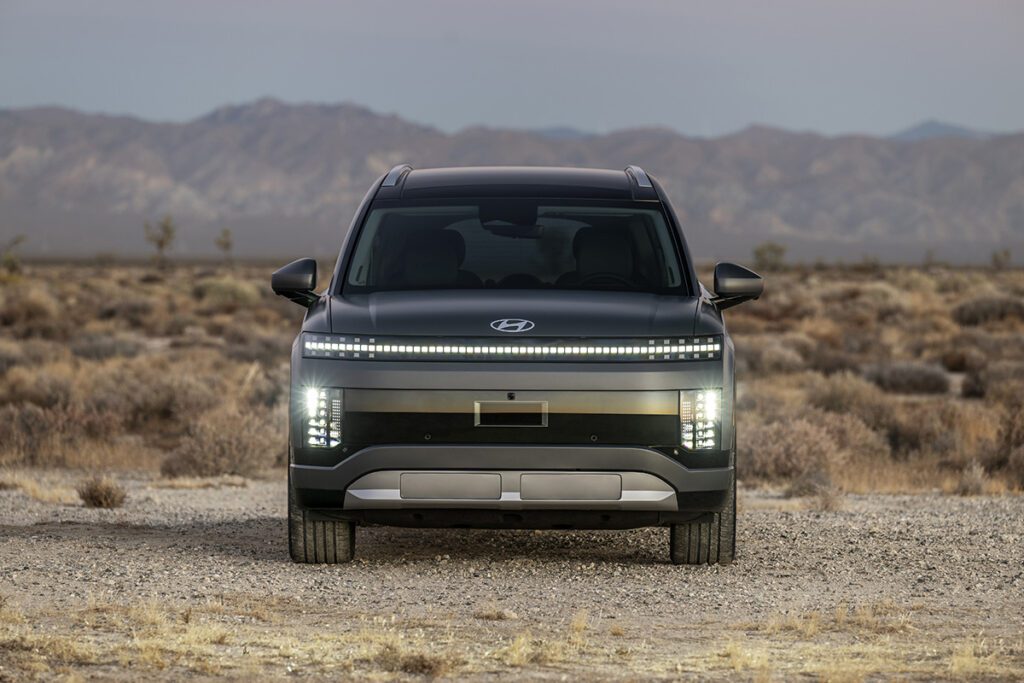
Competitors include the 2025 Kia EV9, Rivian R1S, and Tesla Model X now on sale, and the upcoming Cadillac Vistiq, among others. The 2026 Hyundai Ioniq 9 will go on sale in Spring 2025. It’s built in the Hyundai Motor Group Metaplant in Bryan County, Georgia, that now assembles the refreshed 2025 Ioniq 5 five-seat hatchback—and it’s expected to qualify for the full $7,500 federal purchase incentives, if it still exists when the vehicle goes on sale.
Prices and final trim specifications will be released closer to its on-sale date.
Boxy but surprisingly sleek
The Ioniq 9 adapts the upright, boxy design language of the radical and well-received 2025 Hyundai Santa Fe crossover utility vehicle to an EV that, by necessity, has to slip through the air as efficiently as possible.
Hyundai calls it “bold and elegant,” and the horizontal front light bar just below the rounded front edge of the hood stresses the horizontal line that draw the eye to the sides of this tall, rather slab-sided vehicle. Arches over the wheel wells and a third side window that angles up disguise a side crease that droops behind the rear side doors.
Unlike utility vehicles that try to disguise a fastback shape with a long roof spoiler, the Ioniq 9 has a defiantly upright tailgate—just like the Santa Fe—outlined by vertical taillights made up of its “parametric pixel” square lights. The effect is similar to that of a Cadillac Escalade.
Despite its boxy stance, Hyundai claims a drag coefficient of 0.27 for the Ioniq 9—reflecting thousands of hours of wind tunnel time to eliminate turbulence, reduce drag, and let the slab-sided SUV slip through the air using as little battery energy as possible. (Note drag coefficients from different makers can’t be directly compared because there’s no single set of testing criteria.)
Buyers can choose among 19-, 20-, and 21-inch wheels; Hyundai notes the EPA projected range of 335 miles is measured on a Long-Range RWD model with the smallest 19-inch wheel/tire combination.


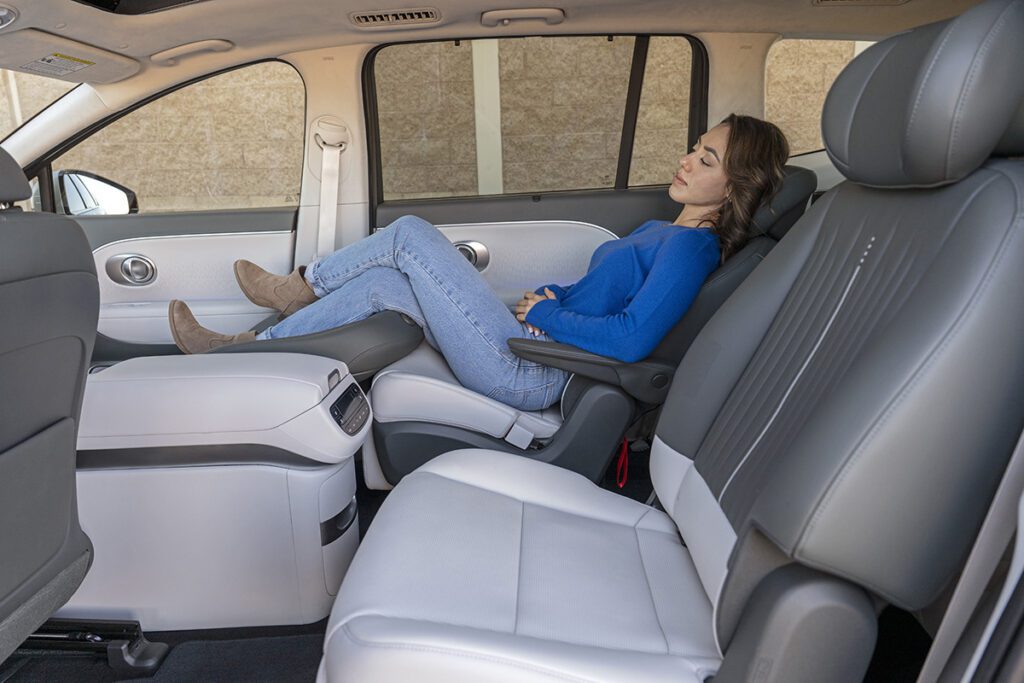
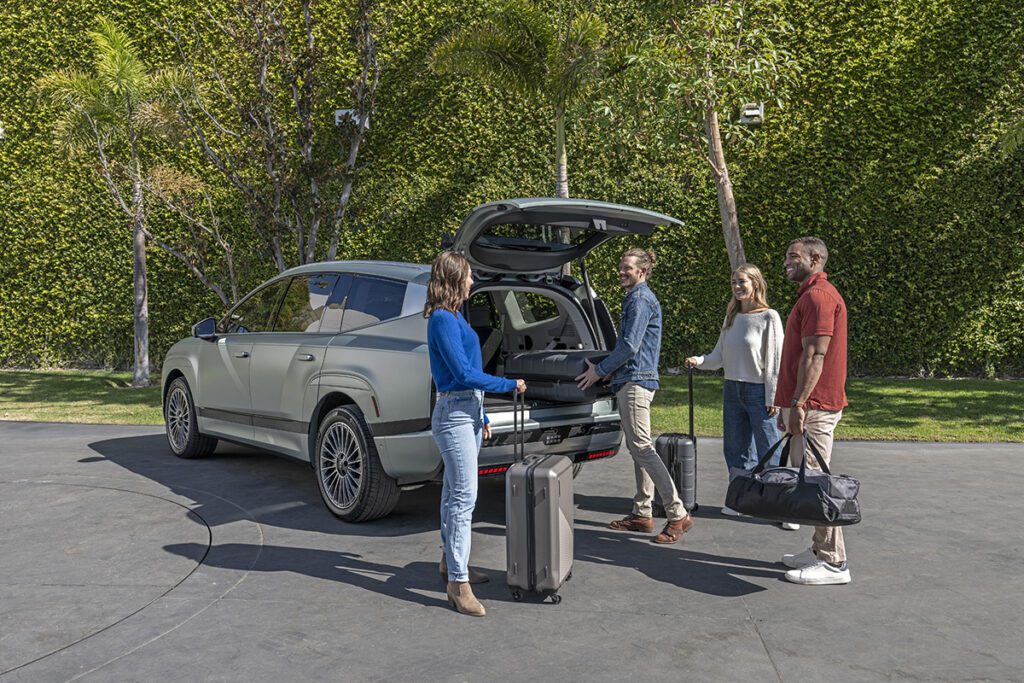
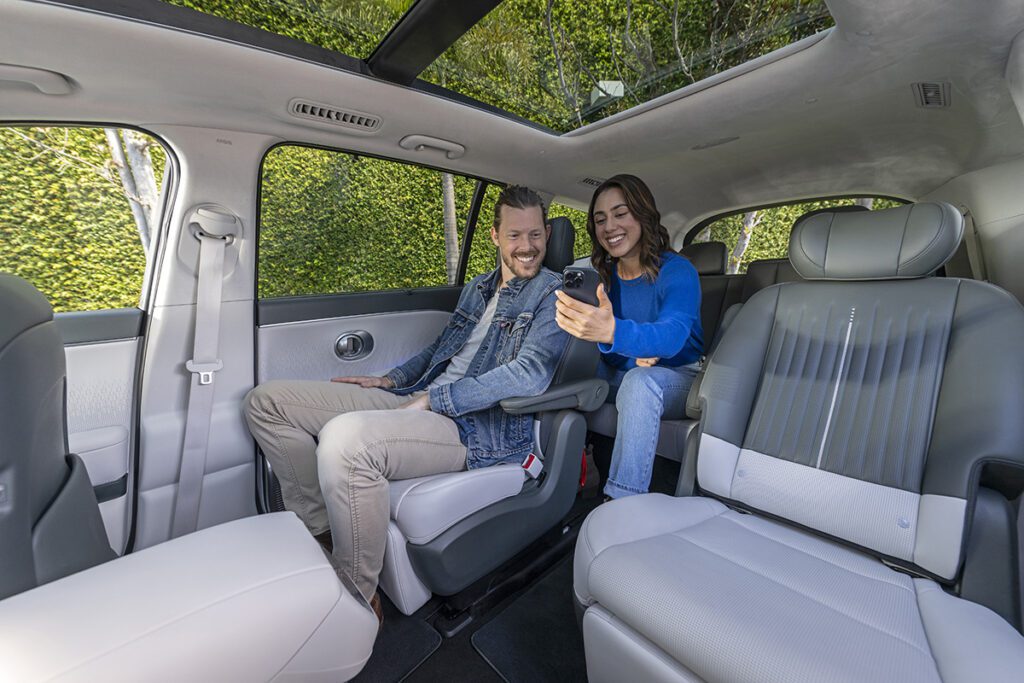
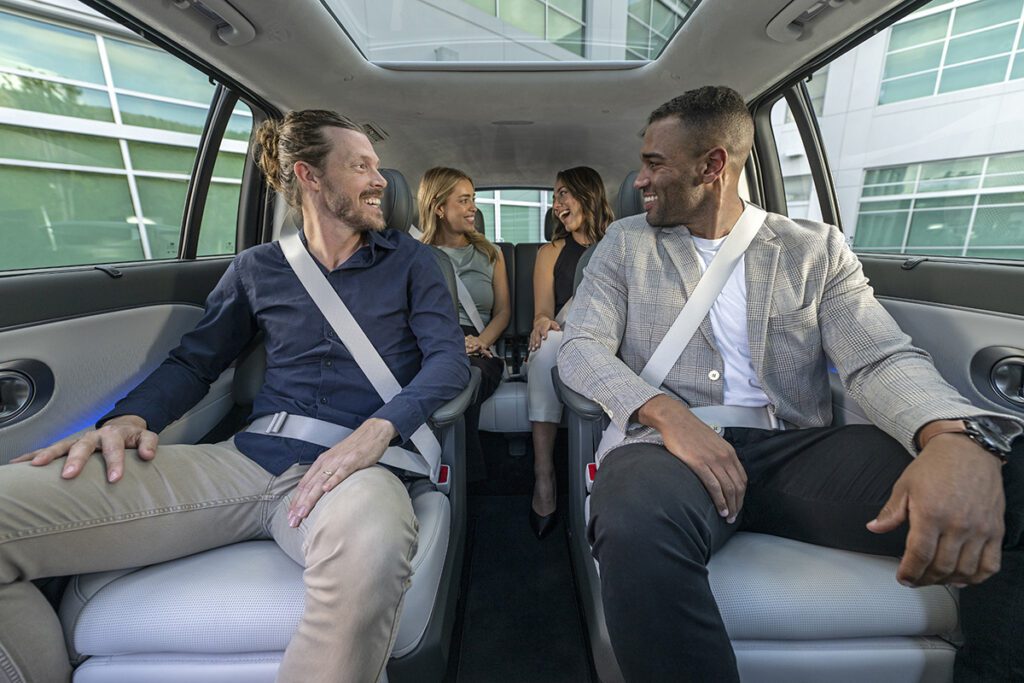
Capacious, premium
Dimensionally, the Ioniq 9’s 123-inch wheelbase is longer than its Rivian R1S (121 inches) or Tesla Model X (117 inches) competitors, yet it’s within a tenth of an inch of the Tesla’s 199-inch overall length and almost 2 inches shorter than the R1S.
Headroom and legroom in both the second and third rows compare favorably as well, though dimensions can deceive—and testing all three in person will be the only way to see if you and your family actually fit comfortably. Cargo volume is 21.9 cubic feet behind the third row, and 46.7 cu ft with the third row folded away. Again, those figures match or beat the R1S and Model X.
Behind the wheel, the driver and front passenger face a wide, low rectangular curved panoramic display over a door-to-door horizontal dash rail that incorporates slim air vents. Relaxation Seats in the first and second rows recline fully, which Hyundai suggests will let up to four occupants rest and relax during charging stops.
Hyundai’s Universal Island 2.0 center console slides on tracks, giving the ability to walk between the front seats in its rear position. The armrest door opens from both front and rear for access to its upper and lower trays.
Both six- and seven-seat configurations are offered, with optional Swiveling Seats in the second row so passengers in the second and third rows can talk to each other (when not engrossed in their devices). Other standard or optional features include a powered second row that moves for third-row access with a single touch, and a powered folding third row.
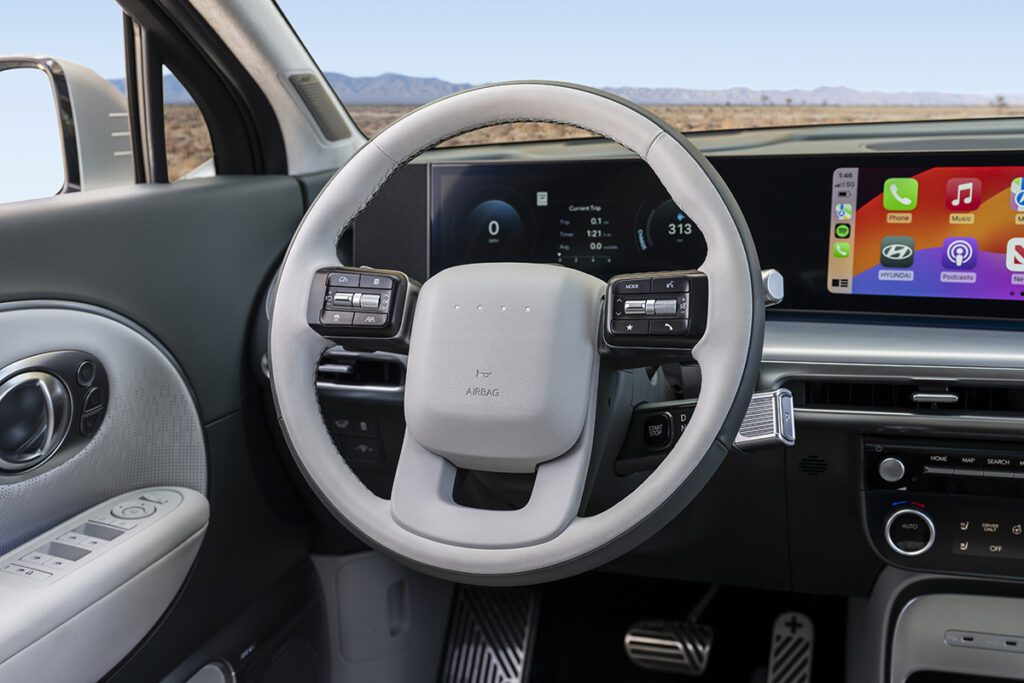
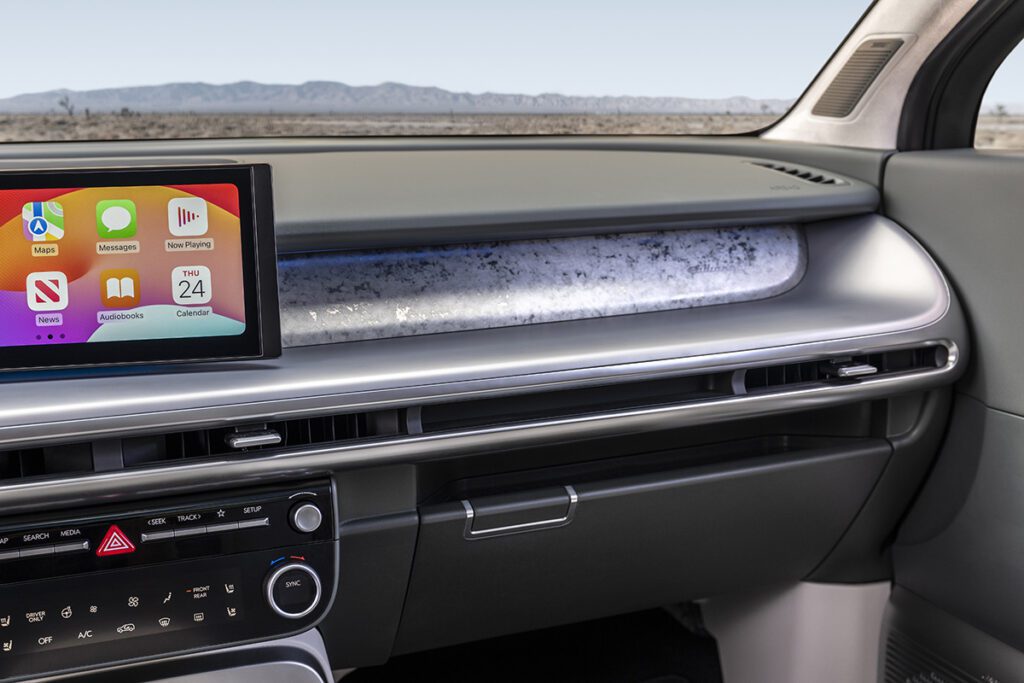

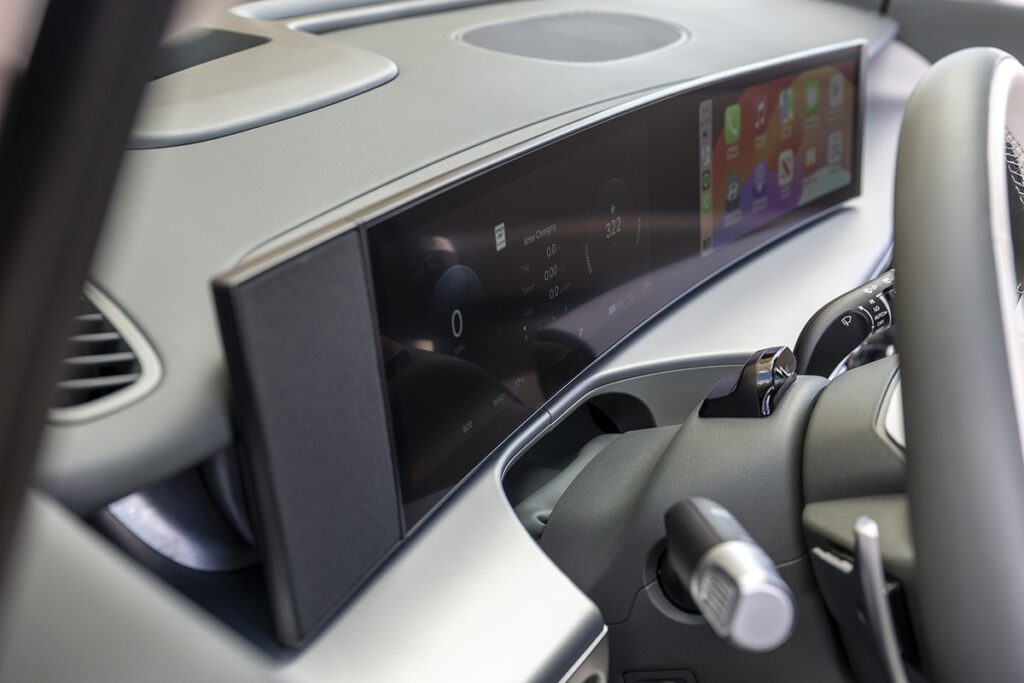
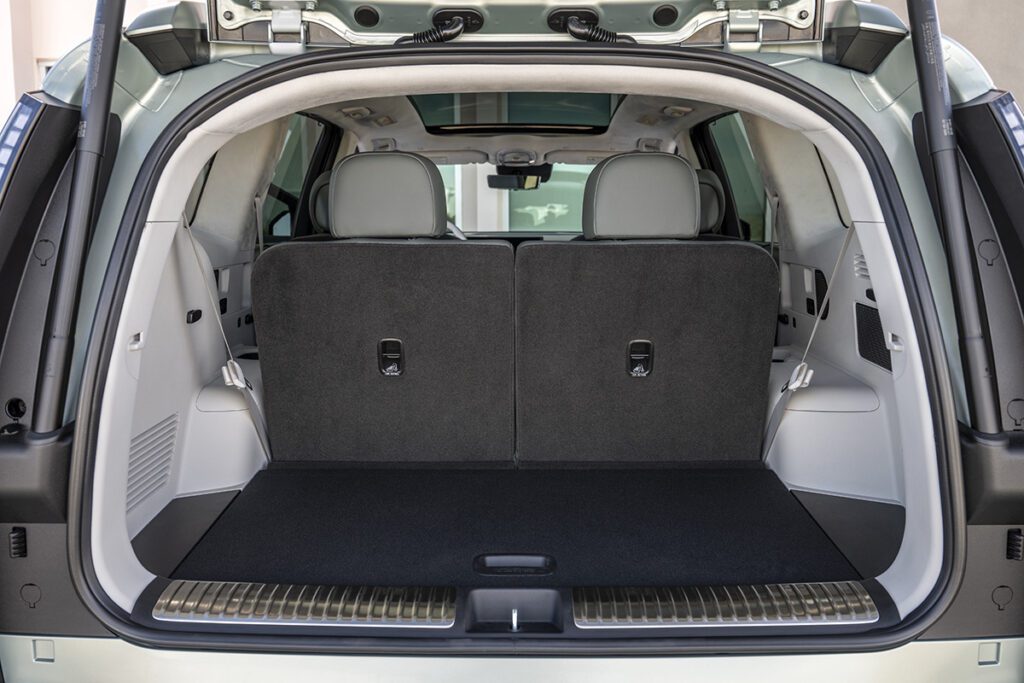

300 miles, up to 422 hp, 800 volts
The 2026 Ioniq 9 is built on the 800-volt e-GMP architecture Hyundai shares with siblings Kia and Genesis, but it aims higher on range and power than the Kia EV9 with similar dimensions. Hyundai says it’s targeting at least 300 miles of EPA-rated range for every model.
All of them will have a large 110.3-kilowatt-hour battery pack, and all are powered by a 160-kilowatt (215-horsepower) motor on the rear axle. Every Ioniq 9 comes with a NACS charging plug from Day One—as do the Ioniq 5s already in production at the Metaplant. Fast-charging time from 10 to 80 percent of battery capacity at a 350-kW charging station is quoted “under optimal conditions” at 24 minutes.
The base Long Range model of the Ioniq 9 is rear-wheel-drive only, while the Long Range AWD model adds a 70-kW motor up front, boosting total power to 303 hp—and the Ioniq 9 Performance AWD model enlarges the front motor to match the rear, at 160 kW, for a total of 422 hp. Quoted acceleration from 0 to 60 mph is 8.4 seconds, 6.2 seconds, and 4.9 seconds respectively.
Towing capacity of the rear-wheel-drive model is rated at 3,500 pounds, with AWD versions at 5,000 pounds. As always, towing will eat significantly into rated range—and you can find lots of videos online that test that very concern.
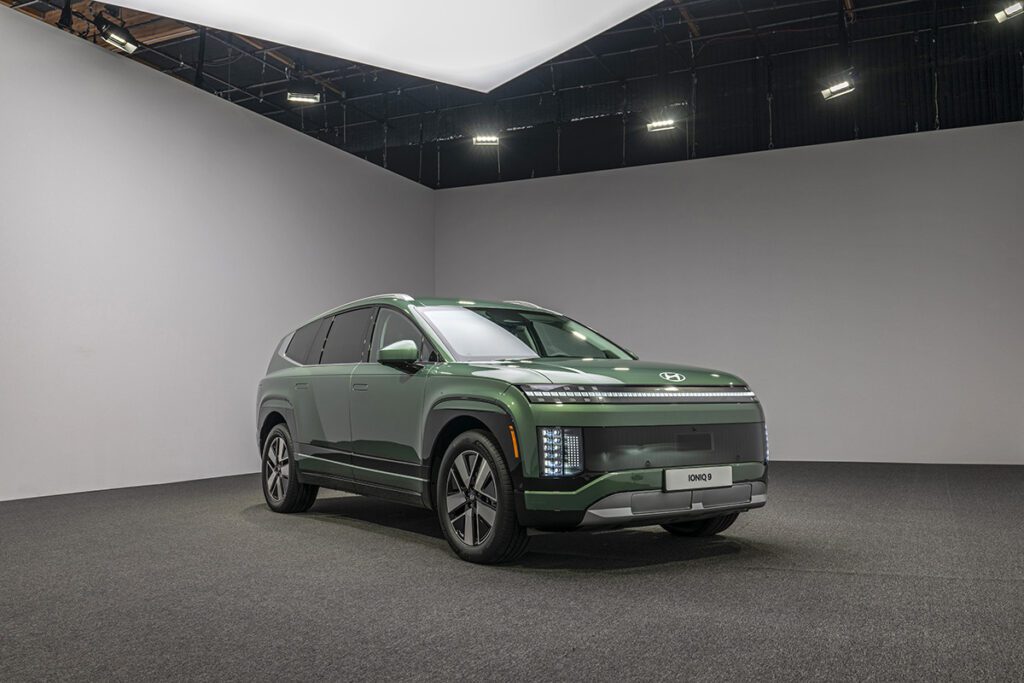
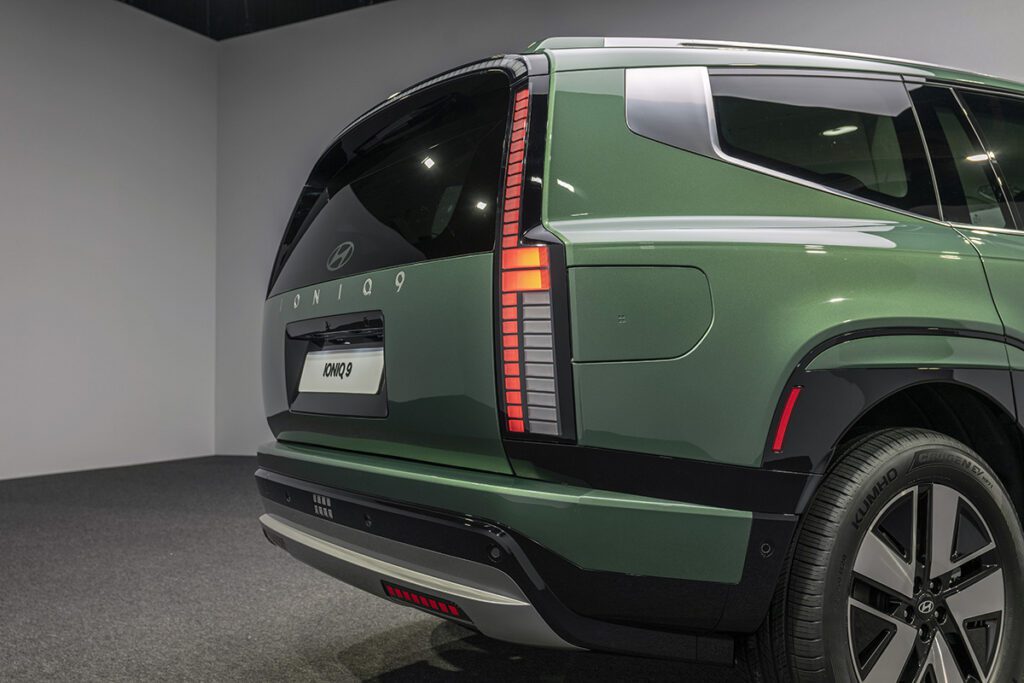
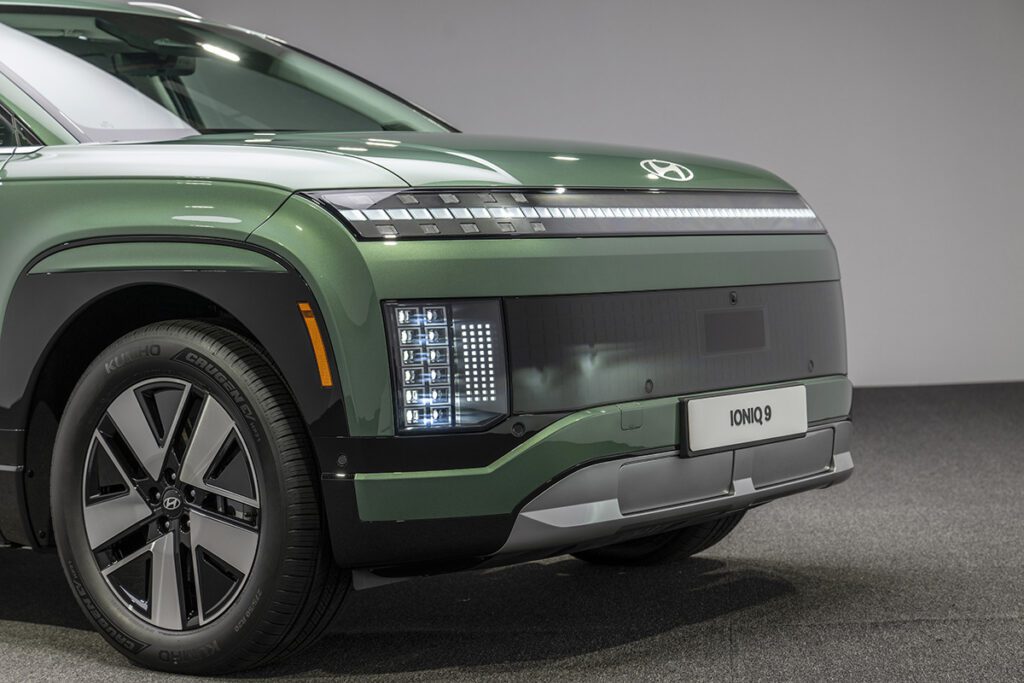
Tech that customers say they want
Hyundai said its research shows that EV shoppers value advanced technology features in their vehicles, and will pay for them. Accordingly, the Ioniq 9 includes over-the-air updates that can add features even after purchase, and Features on Demand store that will let owners buy digital upgrades from the online store that include dynamic lighting patterns and such content streaming options as Amazon Music and Soundcloud.
Other tech features include Hyundai Digital Key 2 to let users unlock and activate the car with their smartphones, and even Hyundai Pay built into the car—allowing the car to pay for charging, tolls, and other costs in future. The usual suite of active and passive electronic safety features is present, though Hyundai said little about anticipated safety ratings.
Hyundai provided airfare, lodging, and meals to enable Charged to bring you this first-person report.

